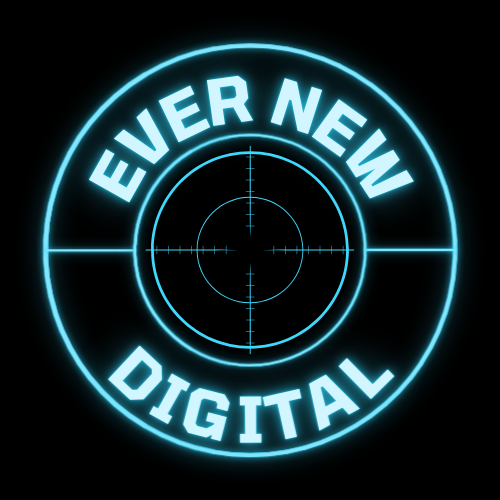PREFACE: WHAT’S A GHOSTWRITER KNOW ABOUT HOW TO INTERVIEW SOMEONE?
What comes to mind when you think of a ghostwriter?
If you’d asked me not too long ago, I would have given you the same answer you’re thinking.
Something like: An unknown writer who helps your favourite Holywood celebrity string their life into a tasty story 🍔
What if I told you that the reality of ghostwriting is far more intriguing (and valuable) than the popular perception?
It’s more than just creating stories that help entertain; it’s also a tool for growing a client base.
Let’s settle on what a ghostwriter is for us for a business owner in 2024: A ghostwriter identifies a business’s undervalued insights and presents them to its ideal clients in a way they can easily digest.
It’s an exciting operation!
Through ghostwriting, a business owner’s hard-earned knowledge is transformed from raw and disorganised thoughts to refined teachings that hook the reader.
“Okay, so why should I listen to you about interviewing?”
Professional interviewing is critical for ghostwriting success.
The client interview is the most critical stage in the ghostwriting process. It’s the first opportunity to get in-depth intel from a client; if poorly executed, the project’s trajectory takes a fatal blow.
Here’s a taste of the two stages of a winning interview that we’ll soon discuss in depth.
The must-do research that leads to perfect interview execution ✅
Crafting your interview blacklist to prevent discussing dead-end topics ✅
Stage Two: Interviewing the Expert
The AI tool that stops you from squandering the time you have with your interviewee ✅
Introduction to the “Freedom Framework” for interviewing that leads to your interviewee sharing their most prized findings with you ✅
Bonus: Kickstart Your Interview
Get a quick overview of the recommended tasks to complete in each stage ✅
STAGE ONE: PREPARATION
A good interview is centred on discovering information from your interviewee that they have yet to release publically. But stage one is purely dedicated to setting up the conditions that allow this to happen.
To achieve this, focus on these research goals:
a. Get up to speed on the current and past marketing material (both video and written) used by the interviewee.
Understanding your interviewee’s past outputs will mean you can steer clear of such topics during the interview.
* It’s recommended to create a topic blacklist, so you can refer to what topics to stay away from as you conduct the interview. *
b. Have current knowledge of your interviewee’s industry.
Your interviewee expects you to have some ground knowledge of their industry and their role within it. Don’t disrespect them by having a poor understanding.
Tackling this stage sounds like a lofty task, but ultimately, you control the depths you go to. Research to the point where you feel prepared for the size of your project.
For instance, are you writing a book that requires an expert’s opinion for a particular chapter, or are there multiple chapters where their input is sought?
Review the “kickstart you interview” section at the end of this article for specific tasks to help you excel in your preparation.
STAGE TWO: INTERVIEWING THE EXPERT
The experts you interview often operate on a packed schedule and have multiple projects vying for their attention.
A key aim of an interview is to uncover the insights that help you present the interviewee as an expert source in your final product as efficiently as possible.
Whether your project is small or large, your efficiency will be boosted by these two tools:
- AI transcription software
- The “Freedom Framework” for interviewing
AI Transcription Software
A variety of companies have recently released this resource.
Otter AI is one that I have personally experienced and have found to be a game changer for increasing interview efficiency.
A tool such as Otter AI allows you to remain focused on conducting the interview, as no distracting note-taking is required.
Even better, you don’t have to worry about misrecording answers or rushed notes damaging the interview’s integrity.
Otter AI integrates with video calling software, including Zoom, so it is simple to transcribe your virtual interviews.
The Freedom Framework
I’ve found the interviews that produce the best outputs can go off track as long as they don’t get stuck in the weeds.
What does this mean?
Give your interviewee the freedom to discuss subjects they want to discuss. However, you should reel the discussion back in when you realise it’s moving into unproductive territory.
What’s considered unproductive territory?
- Topics that you put on your blacklist in stage one.
- Topics your interviewee is not confident with.
- Topics your interviewee is not enthusiastic about discussing.
BONUS: KICKSTART YOUR INTERVIEW
View these recommended tasks before you enter each stage.
STAGE ONE: PREPARATION
- Review the interviewee’s current and previous marketing material.
- Create a blacklist of interview topics.
- Source three industry statistics to discuss with your interviewee.
- Successfully summarise the role of your interviewee’s business and how it assists its clients in a single sentence.
- Finish reading three articles published within the past month dedicated to your interviewee’s industry.
STAGE TWO: INTERVIEWING THE EXPERT
- Activate an AI transcription software.
- Successfully follow the “Freedom Framework” for interviewing.
- Topics to discuss that lead to powerful conversations
- The interviewee’s novel ideas
- Their business success stories
- Opinions on topical industry issues
- Tips the interviewee has for their audience
- Viewpoints on industry statistics (as per stage one)
- Key lessons earned through experience
- State of the industry update
- The interviewee’s novel ideas
